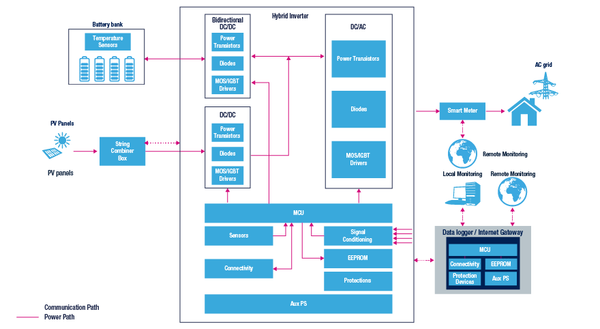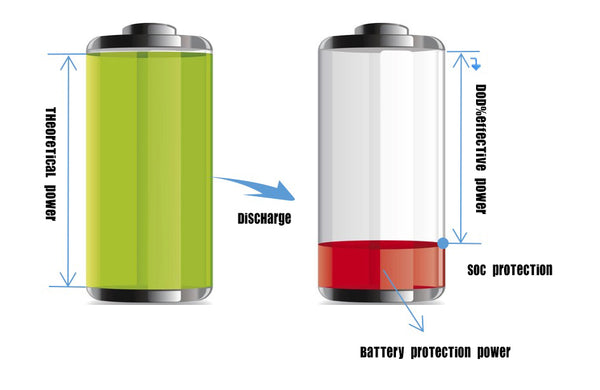Regarding the problems of energy storage systems, the most frequent ones are:
How to choose the battery?
How to match the battery capacity?
How to consider the load?
Under different application scenarios and requirements, the battery capacity design in the energy storage system.
One, the choice of battery type
With the development of battery technology and the rapid decline in cost, lithium batteries have become the mainstream choice in household energy storage projects, and the market share of new chemical batteries has reached more than 95%.

Two, four common misunderstandings in battery capacity design
1. Choose battery capacity only according to load power and power consumption. In battery capacity design, the load condition is the most important reference factor. However, the charging and discharging capacity of the battery, the maximum power of the energy storage machine, and the power period of the load cannot be ignored.
2. Theoretical and actual capacity of the battery. Generally, the theoretical capacity of the battery is marked on the battery manual, which is the maximum amount of power that the battery can release when the battery goes from SOC 100% to SOC 0% under ideal conditions. In actual applications, considering the battery life, it is not allowed to discharge to SOC 0%, and the protection power will be set.
3. The larger the battery capacity, the better. In practical applications, the battery usage rate should be considered. If the capacity of the photovoltaic system is small, or the load uses a large amount of power, the battery cannot be fully charged, which will cause waste.
4. The battery capacity design fits perfectly. Due to the process loss, the battery discharge capacity is less than the battery storage capacity, and the load power consumption is less than the battery discharge capacity. Ignoring the efficiency loss is likely to cause insufficient battery power.
3. Battery capacity design in different application scenarios This article mainly introduces the battery capacity design ideas in three common application scenarios: self-consumption (high electricity bills or no subsidies), peak and valley electricity prices, and backup power sources (the grid is unstable or has important loads) ). (1) "Spontaneous self-use" As the electricity price is high or the PV grid-connected subsidy is low (no subsidy), install photovoltaic energy storage systems to reduce electricity costs. 1) Assuming that the power grid is stable, no off-grid operation is considered. 2) Photovoltaic is only to reduce the power consumption of the power grid. 3) Generally, there is sufficient sunlight during the day. The ideal state is that the photovoltaic + energy storage system can completely cover household electricity consumption. But this situation is difficult to achieve. Therefore, we comprehensively consider the input cost and electricity consumption, and can choose to choose the battery capacity according to the average daily power consumption (kWh) of the household (the default photovoltaic system has sufficient energy). The design logic is as follows:
(2) Peak-to-valley electricity price
The structure of peak and valley electricity prices is roughly as shown in the figure below. 17:00-22:00 are peak electricity consumption periods
During the day, the electricity consumption is low (the photovoltaic system can basically cover it). During the peak period of electricity consumption, it is necessary to ensure that at least half of the electricity is powered by the battery to reduce the electricity bill.
Assuming average daily power consumption during peak periods: 20kWh
The design ideas are as follows:
Calculate the maximum demand value of battery capacity based on the total power consumption during the peak period. Then find an optimal battery power in this interval according to the capacity of the photovoltaic system and the benefit of investment. (3) Areas with unstable power grids-standby power is mainly used in areas with unstable power grids or in situations with important loads. At the beginning of 2017, Goodway once designed a project in Southeast Asia. The specific situation is as follows: Application site: chicken farm, considering the paving area of photovoltaic, it can probably install 5-8KW components. Important load: 4* ventilation fan, single fan Power 550W (if the ventilating fan does not work, the oxygen supply in the chicken shed is insufficient) Grid conditions: unstable grid, irregular power outages, the longest power outage duration is 3~4 hours Application requirements: under normal power grid conditions, the battery is charged first; when the power grid is out of power , Battery + photovoltaic to ensure the normal operation of important loads (fans). When selecting the battery capacity, what needs to be considered is that the battery separately supplies the required power when it is off-grid (assuming there is no PV at night)

Among them, the total power consumption when off-grid and the estimated time off-grid are the most critical parameters. Calculated based on the expected maximum time of power outage of 4 hours, its design ideas can refer to:
The important load in this case is very single, and the design process is relatively simple. If there are other important loads in the system, you need to list them all (as in the example below) and finally determine the required battery capacity based on the maximum electrical load power and power consumption during the longest continuous power outage period throughout the day.
Four. Two important factors in battery capacity design (1) The capacity of photovoltaic system assumes that all batteries are charged by photovoltaics. The maximum power that the energy storage device can charge the battery is 5000W, and the number of hours of sunshine per day is 4h. Then: ① Use the battery as a backup power supply In the mode, the average need for a battery with an effective capacity of 800Ah to be fully charged in an ideal state: 800Ah/100A/4h=2 days ② In the self-use mode, it is assumed that the system will charge the battery at an average of 3000W within 4 hours a day. A battery with an effective capacity of 800Ah needs to be fully charged (without discharging): 800Ah*50V/3000=13 days cannot meet the daily power consumption of the load. However, the battery cannot be fully charged in a conventional self-contained system. (2) Battery redundancy design The three application scenarios mentioned above all mentioned that due to the instability, line loss, ineffective discharge, battery aging, etc., the efficiency loss of photovoltaic power generation, it is necessary to reserve a certain amount when designing the battery capacity. margin.

The design of the battery remaining is relatively free, and the designer can comprehensively determine according to the actual situation of the system design.
JUNLEE Group is an integrated full power energy factory that specializes in Uninterruptible Power Supply (UPS), Lead-Acid Battery, Battery pack, EV battery, Energy Storage Battery, Energy storage power station, Power pack Gel battery, PV Inverter and Solar system.
Production capacity reach 200000 KVaH per month. Products apply to Electric vehicles,electric mobility, solar & wind energy storage system, UPS, backup power, telecommunication, medical equipment and lighting.
JUNLEE sets up "Power research center" with more High-tech products.More than 100 engineers provided in-time and efficient one-stop solutions.
They mission strives to bring green power to the world.
To learn more about Li-ion batteries, please refer to https://www.junleepower.com/

